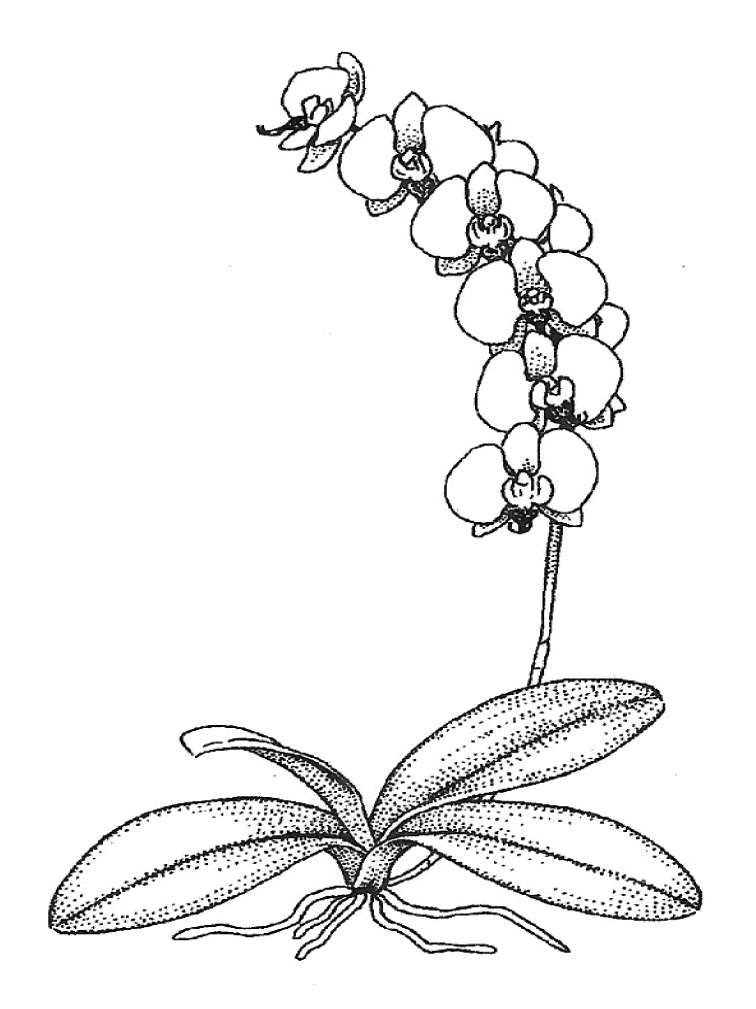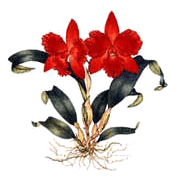Phalaenopsis
fayl-eh-NOP-siss

Phalaenopsis, the moth orchid, is perhaps the best orchid for growing in the home, and is also a favorite with greenhouse growers. Well-grown plants can flower often, sometimes throughout the year. Average home temperatures and conditions are usually sufficient. Flower stems on certain hybrids can be forced to rebloom by cutting the tip off after the initial flowering. Only healthy plants should be induced to flower repeatedly. Culture for Doritis, a related genus, thought by some to be conspecific with Phalaenopsis, and Doritaenopsis, a hybrid between the two genera, is the same as for pure Phalaenopsis.
Light
Is easy to provide for Phalaenopsis. They grow easily in a bright window, with little or no sun.
In overcast, northern winter climates, a full south exposure may be needed. Artificial lighting can easily be provided.
Temperature
For phalaenopsis should usually be above 60 F at night, and range between 75 and 85 F or more during the day. Although higher temperatures force faster vegetative growth, higher humidity and air movement must accompany higher temperatures, the recommended maximum being 90 to 95 F. Night temperatures to 55 F are desirable for several weeks in the autumn to initiate flower spikes. Fluctuating temperatures can cause bud drop on plants with buds ready to open.
Water
Is especially critical for phalaenopsis. Because they have no major water-storage organs other than their leaves, they must never completely dry out. Plants should be thoroughly watered and not watered again until nearly dry. In the heat of summer in a dry climate, this may be every other day; in the winter in a cool northern greenhouse, it may be every 10 days. Water only in the morning, so that the leaves dry by nightfall, to prevent rot.
Humidity
In the home, set the plants on trays of gravel, partially filled with water, so that the pots never sit in water, or set a bowl of water next to your plants and allow the water to evaporate.
Fertilizer
On a regular schedule, especially if the weather is warm, when the plants are most often growing. A good general rule is to apply a balanced (such as 20-20-20) water soluble fertilizer “weakly weekly”.
That is, fertilize every week at one half of the recommended dilution.
.
Potting
Is usually done every one to three years. Phalaenopsis plants must be potted in a porous medium grade mix. Mature plants can grow in the same container until the potting medium starts to decompose, usually in two years. Root rot occurs if plants are left in a soggy medium.
